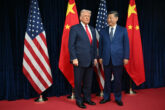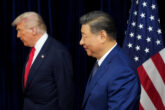September 04, 2014
The Challenge of Responding to Maritime Coercion
In this first working paper produced as part of CNAS’ Maritime Strategy Project, Dr. Patrick Cronin provides a framework for further thinking about both the need to impose costs on bad behavior and gray zone assertiveness in maritime Asia, and the set of strategies best able to accomplish behavioral change while preserving the overall peaceful character of the region.
After making the case for why cost imposition, or balancing, is a critical element of an overall portfolio along with engagement and binding, Dr. Cronin suggests a range of diplomatic, informational, military and economic measures that could raise the costs of assertive actions in Indo-Pacific waters, as well as some challenges and risks associated with these strategies. Overall, policymakers must be broad-minded in their thinking about how to preserve and adapt an inclusive, rules-based system of open access to the global commons. Future papers in this series will address other types and facets of cost-imposing strategies for the Indo-Pacific. Check back for frequent updates here.
More from CNAS
-
Chinese Maker of Bitcoin-Mining Machines Is a Security Threat, Says Expert
Bloomberg News reports that a Chinese manufacturer, Bitmain Technologies Ltd, that sells most of the world’s Bitcoin-mining machines — including 16,000 of them to a venture ba...
By David Feith
-
Indo-Pacific Security / Energy, Economics & Security
North Korea’s Provocations, Power Plays, and Shifting AlliancesTensions on the Korean Peninsula have reached a new and dangerous threshold. President Lee Jae Myung is warning of a real risk of accidental military clashes, as the situation...
By Dr. Go Myong-Hyun
-
Indo-Pacific Security / Energy, Economics & Security
How to Win the Economic War with ChinaTrump's approach to China has run aground, giving Beijing unprecedented advantage in the economic conflict....
By Edward Fishman & Julian Gewirtz
-
Indo-Pacific Security / Technology & National Security
Sharper: Tech + ChinaRecent talks between President Donald Trump and Chinese Communist Party General Secretary Xi Jinping placed a spotlight on emerging technologies, from high-end chips to minera...
By Charles Horn & Sevi Silvia





